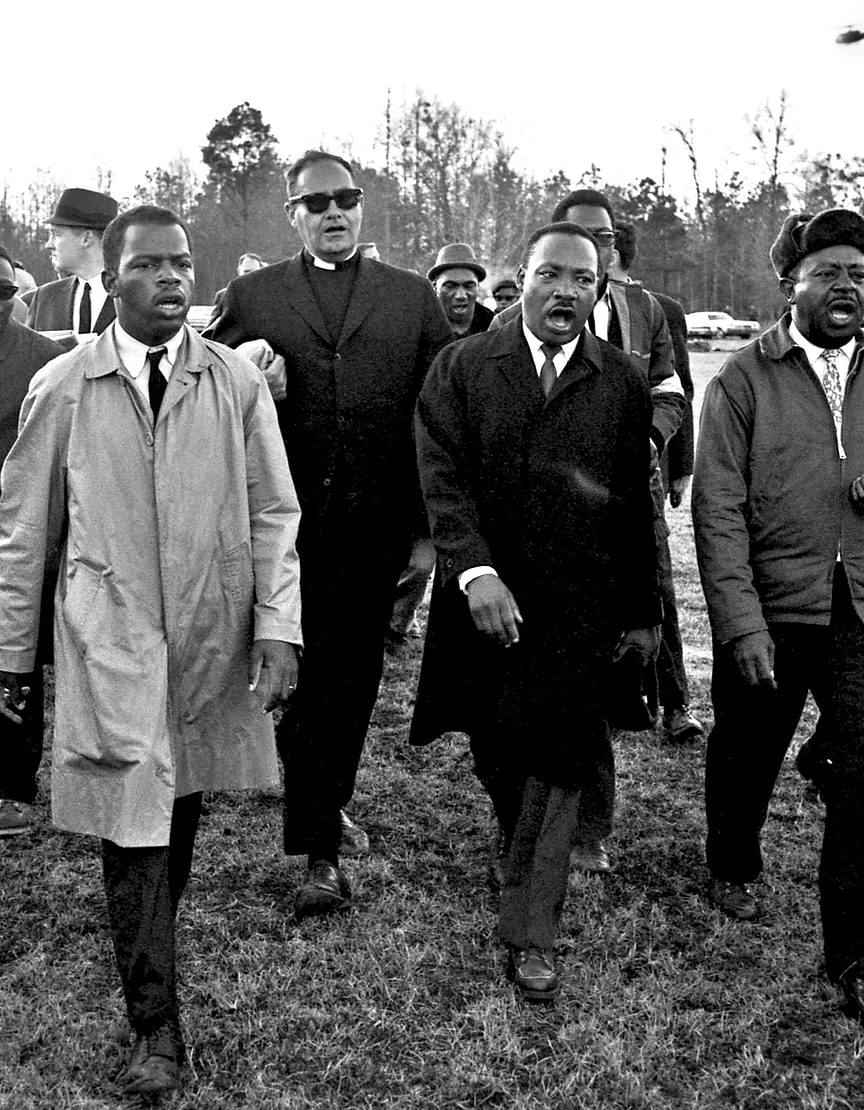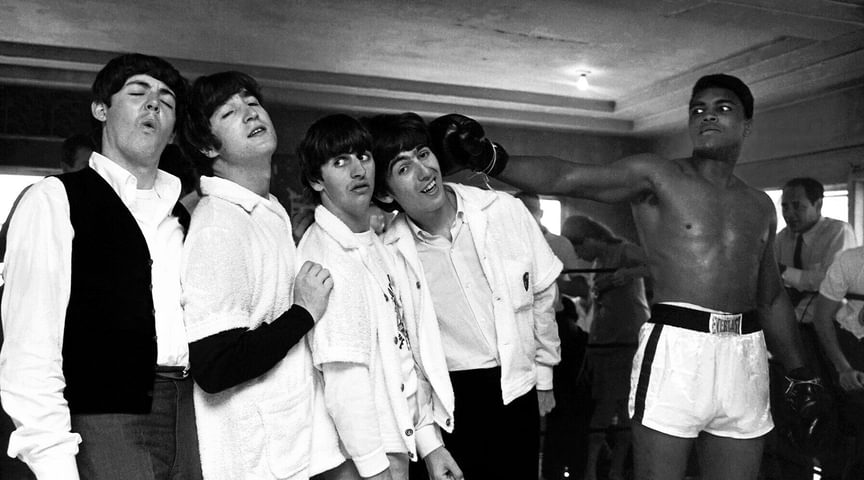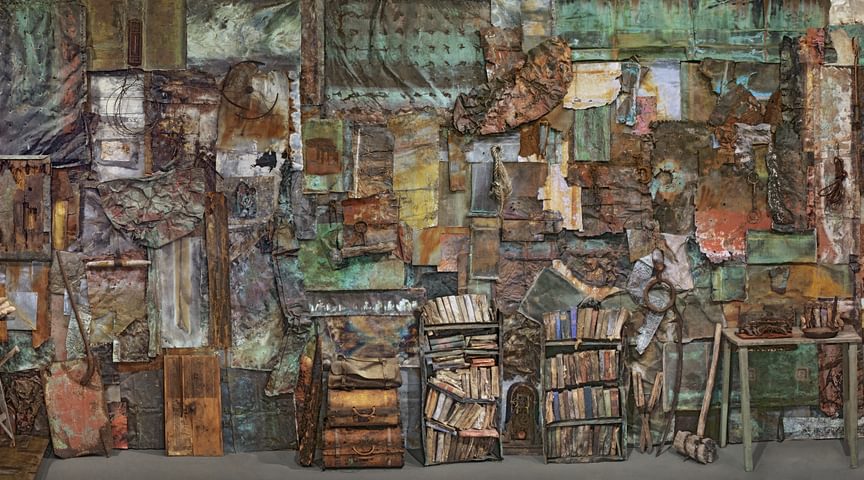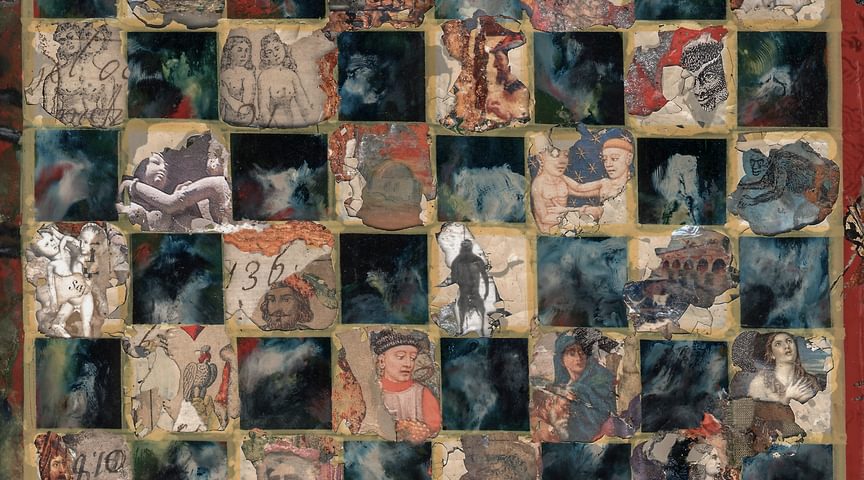
September 06, 2022
On view
Addison Gallery fall season highlighted by exhibitions from renowned photographers Harry Benson and Rosamond Purcellby Rebecca Mongeon
Harry Benson: Four Stories features images that launched the photojournalist’s career
With a focus on four seminal events of the 1960s—the building of the Berlin Wall, the Beatles’ first American tour, the James Meredith March Against Fear, and the assassination of Robert F. Kennedy—Harry Benson: Four Stories will display approximately three dozen works that incisively capture defining moments of this tumultuous period. On view at the Addison Gallery of American Art from September 1, 2022 through January 30, 2023, the exhibition presents the photographs that catapulted Benson’s career, with 14 works by Benson from the Addison’s collection as well as loans from the artist.
The exhibition includes historic photographs of soldiers and civilians at the construction of the
Berlin Wall and Checkpoint Charlie; Martin Luther King Jr. and John Lewis at the James
Meredith March Against Fear in Mississippi; the Beatles through the rise and peak of
Beatlemania; and Robert F. Kennedy’s hopeful start to a presidential campaign and shocking
assassination. Benson’s photographs illustrate an important and turbulent time in world
history, creating a record of events that defined a decade.

Scottish-born photojournalist Harry Benson CBE came to America with the Beatles in 1964 and in his words, “never looked back.” In the decades since, the award-winning photographer has demonstrated great range in his work. In addition to the powerful stories featured in this exhibition, Benson also has covered conflicts in Kosovo, Bosnia, and the Gulf War; is the only photographer who has photographed the last 13 U.S. presidents, from Dwight D. Eisenhower to Joe Biden; and has also turned his lens on everyone from Muhammad Ali to Queen Elizabeth II. His photographs of historic events, political figures, and luminaries have been published in major magazines including LIFE, The Daily Express, Time, Vanity Fair, W, Newsweek, French Vogue, Paris Match, Forbes, The New Yorker, People, Quest, and The Sunday Times Magazine. The subject of a 2015 documentary, Harry Benson: Shoot First, Benson’s work has also been published in numerous monographs including the recently released Paul celebrating the 80th birthday and career of Paul McCartney.
In conjunction with the exhibition, the Addison Gallery is hosting a Q&A with Benson followed by a reception on Saturday, October 22, beginning at 5:00 pm. Both events are free and open to the public; registration for the Q&A is required. Find more details at www.addisongallery.org.
Top Image: Harry Benson, John Lewis, Dr. Martin Luther King, Jr., & Ralph Abernathy singing “We Shall Overcome” on the James Meredith March Against Fear, Mississippi, June 1966. Gelatin silver print, 24 x 30 inches. Courtesy of the artist and Gigi Benson.
First Retrospective of Photographer and Conceptual Artist Rosamond Purcell Opens
Rosamond Purcell: Nature Stands Aside, the first retrospective of the artist’s work, which transcends the boundaries of both art and science, will be presented by the Addison Gallery of American Art in September 2022. The exhibition will feature over 150 of the artist’s haunting photographs, assemblages, collages, and installations spanning Purcell’s career from the late 1960s to the present day.
Throughout her more than 50-year practice, Purcell has collaborated with paleontologists, literary
scholars, historians, museum curators, and erudite magicians, and has drawn inspiration from
iconoclastic sources, from a 13-acre junkyard in Maine to natural history museum collections from
around the world. A pioneer of fine art color photography and an inspiration to a generation of artists
from Mark Dion to Sally Mann, Purcell probes the actions of time and decay as elemental to the natural
world and the human condition.

Among the works in the exhibition are Purcell’s lesser-known early portraits and radically experimental Polaroid prints from the 1970s and 80s, as well as her photographs of preserved animals in museums’ collections, fossils, eggs, nests, specimens from medical museums, and forgotten human belongings, in addition to mixed media collages and constructions, including Wall, a 20-foot-long installation composed of naturally patinated scrap metal and other objects rescued from obscurity.
“This retrospective is a long overdue examination of Purcell’s work, which reveals the connections between the unsettling and the sublime, the beautiful and the bizarre, the natural and the manufactured,” said Allison Kemmerer, director of the Addison Gallery of American Art. “The Addison has long presented and championed photography, and Purcell’s experimental Polaroid work in the 1970s was instrumental in the recognition of color photography as fine art. But just as her work straddles the intersection of art and science, Purcell herself defies any simple categorization.”
“Purcell’s six decades of work, while brilliantly varied and resistant to easy classification, speak eloquently to her persistent interrogation of the ways in which we attempt to understand the world around us, exposing how the barriers of logic and reason that we erect to make order out of chaos are porous and unreliable,” said Gordon Wilkins, the Addison’s Robert M. Walker Associate Curator of American Art and curator of the exhibition. “While Purcell is sui generis, her photography, scholarship, installations, trailblazing institutional collaborations, and writing have inspired a generation of artists. Now, in the year she turns 80, we will bring the full sweep of her works together for the first time, underscoring her enduring impact as an artist and a thinker.”

Purcell grew up in Cambridge, Massachusetts, and after graduating from Boston University began her career as a teacher before she began experimenting with photography when she received her first Polaroid camera in the late 1960s. In the early 1980s, she began creating the work for which she is best known, images of natural history specimens stored deep, oftentimes, in the bowels of scientific museums and research institutions around the world. Purcell was the subject of the 2016 documentary film An Art That Nature Makes: The Work of Rosamond Purcell by Molly Bernstein. Purcell’s books include: Book Nest, Illuminations: A Bestiary, A Glorious Enterprise: The Museum of Natural Sciences of Philadelphia, and Owls Head: On the Nature of Lost Things, which documents Purcell’s 20-year exploration of a multi-acre Maine junkyard. Her work has been exhibited throughout the U.S. and Europe and is held in the collections of the Museum of Fine Arts, Boston; the Metropolitan Museum of Art; the Nelson-Atkins Museum of Art; the National Academy of Sciences in Washington, D.C.; the V&A in London; the Art Institute of Chicago; the National Gallery of Canada, and other institutions.
Rosamond Purcell: Nature Stands Aside is on view from September 1 through December 31 and is curated by Gordon Wilkins.
A full-color catalogue published in collaboration with Rizzoli Electa will accompany this exhibition with texts by Mark Dion, Christoph Irmscher, Errol Morris, Rosamond Purcell, Belinda Rathbone, and Gordon Wilkins. Support for this exhibition has been provided by the Artist's Resource Trust.
Categories: Arts
Other Stories

Skills for the future will require a critical balance of intellectual dexterity and technical expertise

Two new art installations created by Jennifer Cecere ’69 will be installed on campus this spring.



